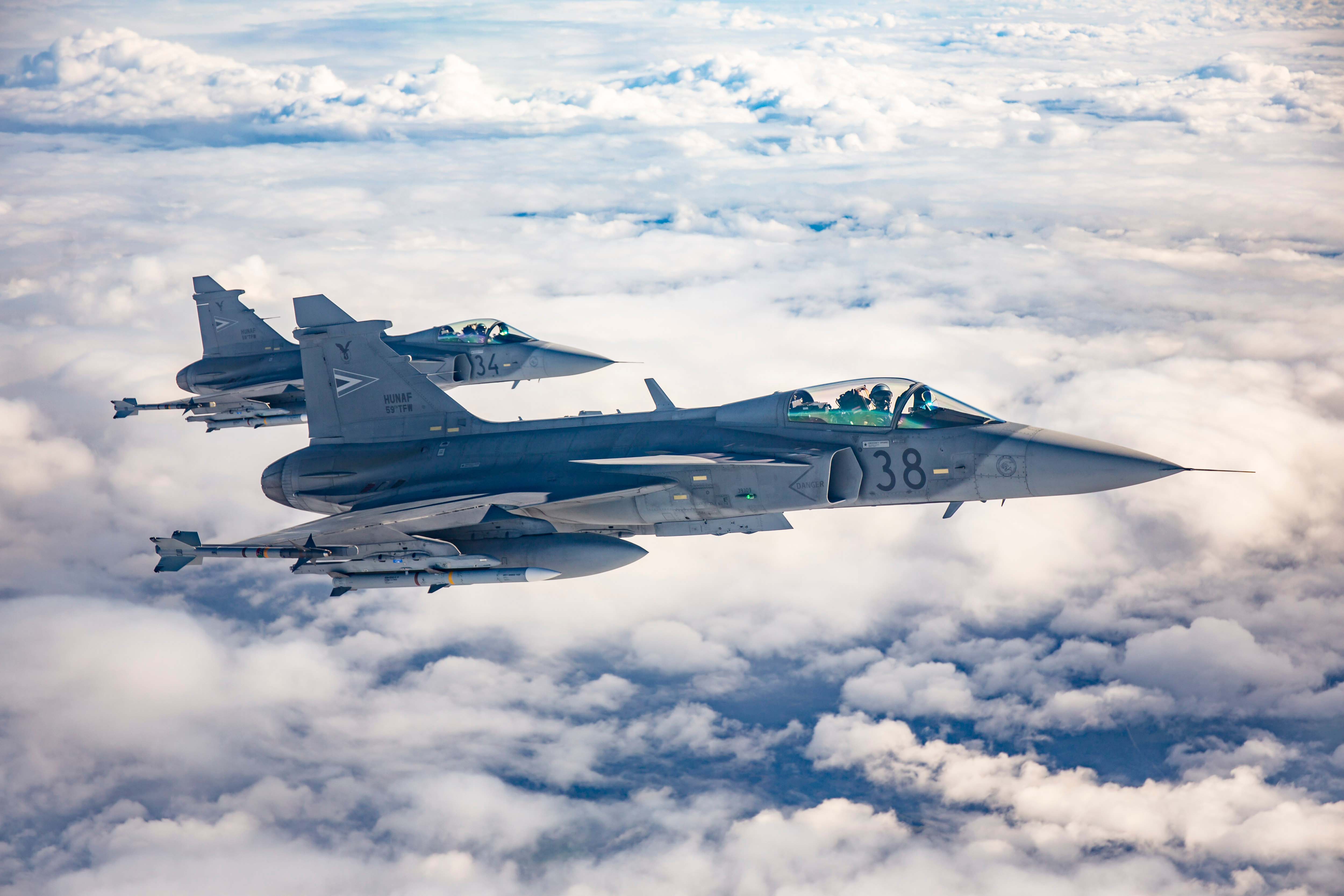Hungary has hinted that it is considering the purchase of the latest variant of the Saab Gripen, the Gripen-E, at a time when the Swedish manufacturer is desperately looking for buyers for its most advanced Gripen produced to date.
Janes reported on May 20 that Hungary was in talks with Sweden about adding the Gripen E combat aircraft to its current fleet of Gripen C/Ds, quoting a senior Saab official.
Åsa Thegström, vice president and deputy head of Aeronautics, announced that negotiations were on about the possible sale of the company’s latest Gripen E to the Hungarian Air Force (HuAF), which already operates the Gripen C/D aircraft. The Vice President was speaking to reporters at Saab’s production facility in Linköping. Thegström stated, “We are having interesting discussions regarding the Gripen E with Hungary.”
According to Richard Smith, Saab’s deputy head of marketing and sales for the Gripen, the HuAF is considering the acquisition to return to two front-line operating squadrons. However, he noted that the timing for such a procurement is currently unknown.
Hungary leased the Gripen C/D variant from Saab in 2001, which was eventually put into service in 2006. Additionally, in February this year, ahead of ratification of Sweden’s NATO membership, Hungary announced a deal to acquire four Saab JAS Gripen fighter jets. At that time, the deal was seen as a quid pro quo, as Hungary had previously opposed Sweden’s entry into NATO.
Currently, the 14 aircraft in service are primarily responsible for protecting the Hungarian airspace, but since 2014, the Puma squadron of Gripens has also been in charge of defending the Slovenian airspace.
The purchase of Gripen-Es would enhance that capability and could prove to be a win-win situation for both sides. While Hungary needs to bolster its air power amidst a worsening situation in Europe, Saab has failed to attract buyers for its Gripen-Es.

The aircraft failed to take off as several European countries where it was a bidder went with the fifth-generation F-35 Lightning II stealth jet. Frustration peaked in 2022 when Saab’s President and CEO, Micael Johansson, expressed dismay at the persistent lack of export success for the Gripen fighter jet.
The last triumph for the Gripen fighter occurred in 2014 when Brazil entered a US$5.4 billion deal for 36 Swedish-made fighters. That was followed by a long period of missed opportunities and a waning international presence as rivals like the F-35 and Rafale continued to dominate the market despite the Gripen-E being positioned as a cost-effective combat aircraft.
While Saab has pitched the Gripen-E jet to countries like Thailand and the Philippines, none of those countries have made a decision on purchase yet. The deal with Hungary could, thus, infuse a new lease of life to these cutting-edge fighters that continue to await an export take-off in the face of burgeoning competition.
Gripen-E Fighters
The E-Series represents a continuation of the lineage that began with the original Gripen-A single-seat and Gripen-B two-seat variants.
Although the single-seat E-model’s outward design is largely similar to its predecessors, it offers several notable improvements and distinctions.
Saab describes the Gripen-E as “Designed to defeat any adversary. Made for forward-thinking air forces, Gripen E incorporates cutting-edge technologies, the latest systems, sensors, weapons, and pods to ensure combat advantage, delivering air superiority in highly contested environments. Silent networking and total sensor fusion across a tactical air unit to blind and confuse the enemy. One aircraft is active, the others go passive.”
Further, Saab promises that the Gripen-E redefines the rules of the game by allowing the first missile launch opportunity and the first kill. Saab claims its design represents a breakthrough, allowing it to swiftly integrate new hardware and update software applications to adapt to evolving mission requirements.

Further, the fighter jet incorporates more prominent air intakes, has the enhanced General Electric F414-GE-39E engine, and has 10 hardpoints (the mounting points or weapon stations on the airframe that carry weapons, ordnances, and support equipment like flares and countermeasures, targeting pods, or drop tanks). The Gripen-E’s avionics architecture stands out as a remarkable feature.
The Gripen-E doesn’t incorporate stealth design characteristics. Saab argues that this decision was made because of the speed at which hardware and software technologies are developing, which it predicts will increase the radar detection of stealth aircraft.
Since it is a difficult and expensive task to change or reconfigure an airframe, Saab has chosen to stay competitive by depending on rapidly developing technology instead of stealth to obtain an advantage in combat. A major focus of this strategy is on sophisticated electronic warfare capabilities.
The Gripen is designed for quick field deployment, especially at remote bases. It can also be effectively maintained by a few people.
It also features highly sophisticated electronic warfare and communication systems, a new active electronically scanned array (AESA) radar, and the InfraRed Search and Track System (IRST). Saab says, “The E-series redefines air power for the 21st century by extending operational capabilities.”
A potential purchase by Hungary might finally redefine Saab’s fortune.
- Contact the author at sakshi.tiwari9555 (at) gmail.com
- Follow EurAsian Times on Google News




